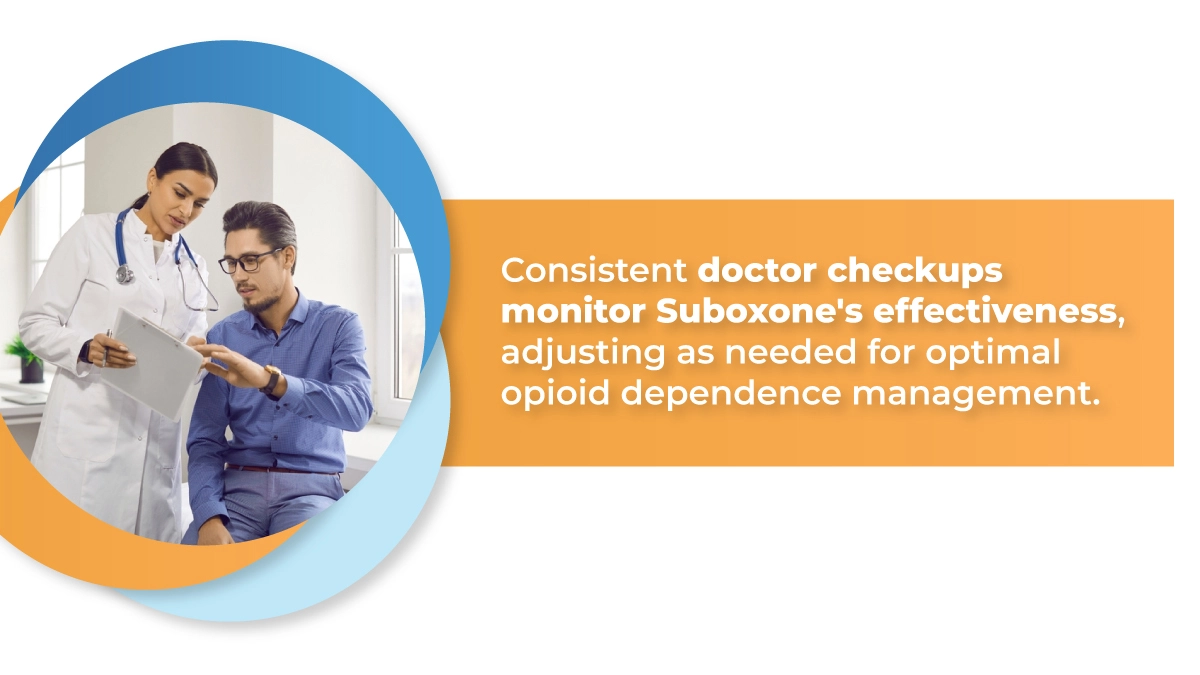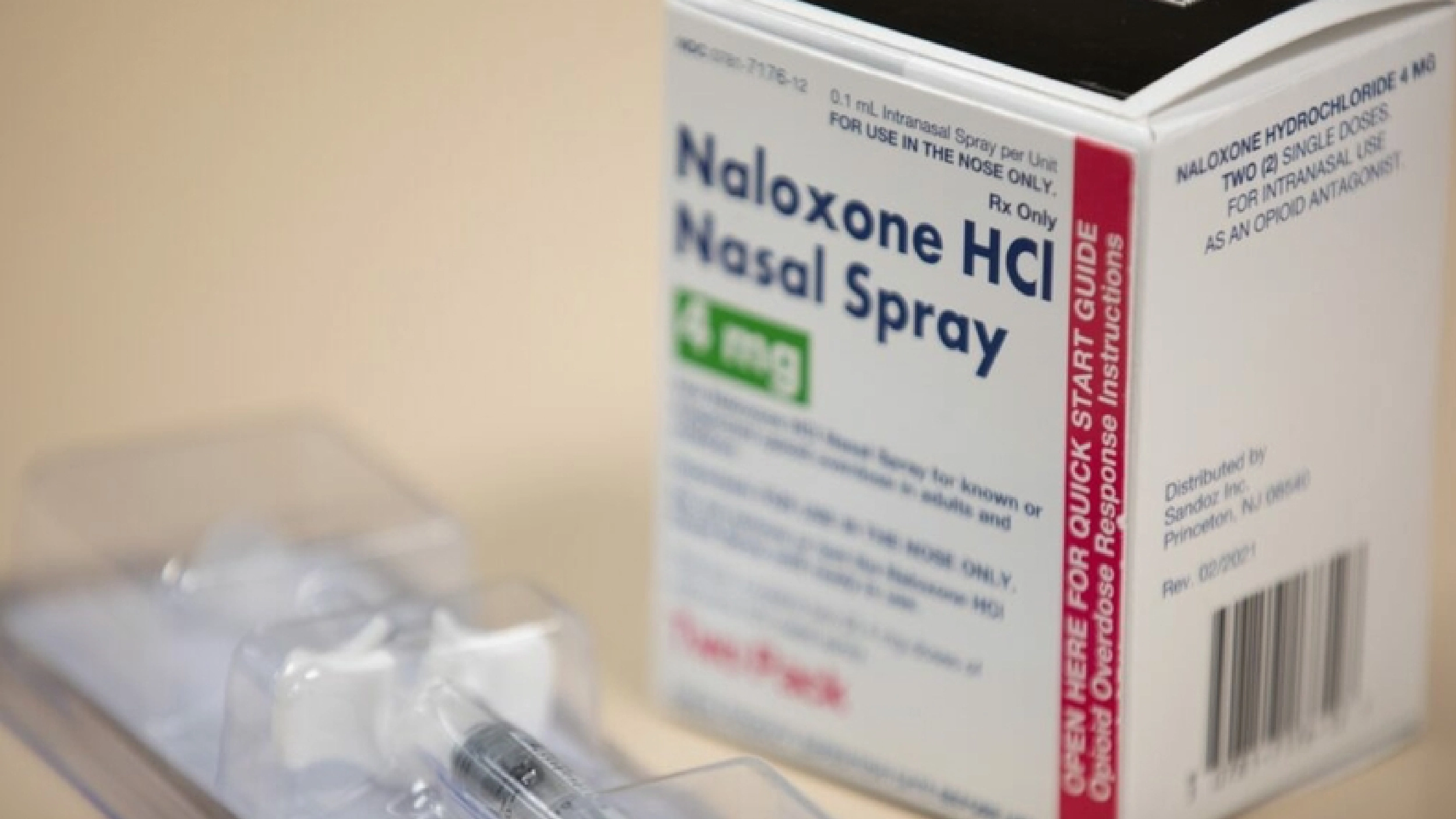
A Guide To Repairing Family Relationships
Discover expert tips for repairing family relationships and fostering healthy connections with The Recovery Team.

Suboxone is a prescription drug used to treat opioid use disorder, containing buprenorphine and naloxone. Doctors give it through sublingual tablets or the Suboxone film, which acts as an anti-craving drug and reduces withdrawal symptoms.
Medical help is crucial for appropriate dosing, as individuals and their responses to the medicine vary. By blocking the effects of opioids, it helps people gradually reduce doses under medical supervision. It plays a vital role in supporting people on their journey to recovery.
Suboxone, with buprenorphine and naloxone, aids in opioid addiction treatment, reducing cravings and withdrawal. Here’s what you need to know:
The Recovery Team aims to ease your recovery journey. Reach out to us today at (800) 817-1247.
Suboxone is a medication used to help people who are struggling with opioid addiction. It combines two active ingredients: buprenorphine and naloxone. Buprenorphine is a partial opioid agonist, meaning it can mimic the effects of opioids but to a lesser extent. Naloxone is an opioid antagonist that helps prevent misuse.
Suboxone is often used in the treatment of substance use disorder. It helps reduce cravings and symptoms of withdrawal in patients. Administered in the form of sublingual films or strips that dissolve in the mouth, Suboxone contains a specific amount of buprenorphine and naloxone to be safe and effective.
The active ingredient, buprenorphine hydrochloride, operates as a partial opioid agonist. That means it can emulate the effects of opioids by attaching partially to opioid receptors. It effectively manages cravings and alleviates withdrawal symptoms in patients undergoing addiction treatment.
The second active ingredient, naloxone (mg naloxone), serves as an opioid antagonist. As a second film, its primary role is to counteract the effects of opioids and act as a safety measure, discouraging misuse.
For adults dealing with opioid dependence, Suboxone can provide pain relief when taken as prescribed. The buccal film is placed under the tongue or inside the cheek, allowing absorption into the bloodstream. This method helps create a safe place for patients to manage their addiction.
Before starting Suboxone, you should take several crucial steps to ensure a safe and effective treatment journey. It effectively acts against full opioid agonists such as heroin addiction and reduces cravings.
Initiating Suboxone as a prescription medicine requires a thorough consultation with a healthcare provider. Discussions may cover the last use of opioids, potential withdrawal symptoms, effects of opioid medication, and the induction phase.
Your healthcare provider will assess your general health, inquire about the effects of other opioids, and determine the appropriate dose of buprenorphine. It is essential to provide general information about your health, including any issues like weight loss or concerns about opioid overdose.
Ensuring the proper use of Suboxone is essential for effective treatment. This involves diligently following the guidance provided by your healthcare provider, adhering to the prescribed dose, and using the Suboxone film as directed.
These crucial steps are integral to safely managing the effects of opioids and maximizing the benefits of Suboxone therapy. By following these guidelines meticulously, individuals can contribute to their overall well-being and successful recovery journey.
Recognizing the right time to take the number of doses of buprenorphine is crucial for effective treatment. The timing to use this medication varies for each patient. However, it is typically taken once a day. The initial dose is administered during the induction phase with the assistance of a healthcare professional. That may involve a pill or a carefully measured Suboxone film (mg film). It’s vital to follow the prescribed dosage, ensuring relief from unpleasant withdrawal symptoms.
A nurse or healthcare provider can offer advice and regular appointments, including a follow-up appointment, to monitor progress. Any breathing problems or adverse effects should prompt an immediate visit to the emergency department.
Administering Suboxone is essential for appropriate use. Depending on the prescribed initial dose, you either take a pill or Suboxone film (mg film) as an opioid partial agonist during the medication-assisted treatment. To prevent QT prolongation, following the healthcare provider’s instructions is crucial.
Take buprenorphine as directed, placing it under the tongue and allowing it to dissolve completely. Avoid eating or drinking until the film is fully dissolved. Any concerns or adverse effects, such as the risk of dizziness, should be promptly addressed with your healthcare provider.
When taking Suboxone, avoiding common mistakes is crucial to ensure a successful treatment journey. One standard error is missing a dose and taking a double dose.
Doubling up on doses is a mistake that can lead to adverse effects, including bad withdrawal symptoms. Additionally, storing Suboxone incorrectly, not at room temperature, can impact its effectiveness.
Mixing Suboxone with other drugs, potent opioids, can have severe consequences. The combination of buprenorphine in Suboxone and other substances can lead to strong opioid withdrawal symptoms.
It’s essential to disclose all medications, including occasional use, to healthcare providers to prevent adverse reactions. The particular purpose of such information is to ensure the information’s accuracy for the individual’s safety.
Inappropriate dosage, whether exceeding the prescribed amount or taking single doses in mg increments of buprenorphine without guidance, can result in signs of moderate opioid withdrawal. Healthcare providers determine the usual starting dose, and deviations can lead to severe withdrawal symptoms. Any adjustments to the dosage should be made only under the guidance of a healthcare professional.
Adhering to your Suboxone regimen is vital for achieving effective treatment, and understanding how to navigate missed doses is crucial. If a dose is overlooked, it’s important to take the next one as soon as possible, but doubling up is strongly discouraged to prevent adverse effects or withdrawal symptoms.
Proper storage of Suboxone strips at room temperature, away from moisture, is imperative for maintaining efficacy. Open communication with your healthcare provider is key, especially if occasional use of short-acting opioids becomes necessary. Any changes in your medical history should be disclosed to ensure accurate dosing, and if severe opioid withdrawal occurs, seeking medical attention is advised.
Regular checkups play a vital role in monitoring your response to Suboxone treatment. Doctors assess the medication’s effectiveness and adjust as needed, considering the combination of buprenorphine and naloxone hydrochloride in Suboxone film to prevent misuse. Tailoring the dose to your specific type of opioid dependence is often part of the doctor’s evaluation.
Regular checkups also involve discussions about alcohol use and its potential impact on your treatment. Suboxone treatment is comprehensive, and maintaining the correct dosage through regular checkups ensures its ongoing effectiveness in supporting your recovery journey.
Proper administration of Suboxone is necessary. Allowing the film under the tongue to dissolve completely. Reporting any runny nose or serious allergic reactions during treatment is important for your doctor to address promptly.
Suboxone, a medication used in opioid addiction treatment, may have side effects that individuals should be aware of. Here are the possible side effects of Suboxone film and ways to alleviate them:
Respiratory Failure: Difficulty in breathing is a serious side effect. Practice breathing exercises and inform your doctor if you experience slow breathing or shortness of breath.
Drowsiness: Be cautious when driving or operating machinery, especially during the initial stages of treatment. Adequate rest and sleep are essential to mitigate the impact of sleepiness.
Sleep Apnea: Inform your healthcare provider if you have a history of sleep apnea for proper monitoring. Continuous communication helps tailor treatment to individual sleep patterns and needs.
Low Potassium levels: Prescription drugs can often lead to low potassium levels. Include potassium-rich foods in your diet, and stay hydrated with a sip of water to manage levels. Maintaining a healthy diet is crucial for overall health and potassium regulation.
Abdominal Pain: Report persistent abdominal pain to your doctor for evaluation and potential adjustments in treatment. Open communication ensures timely intervention and a more comfortable treatment experience.
Slow Heartbeat: Regularly monitor your heart rate and consult your healthcare provider if you notice any irregularities. A consistent heart rate check aids in the early detection and management of potential issues.
Allergic Reactions: Be vigilant for signs of a severe allergic reaction, such as skin redness, itching, or swelling, and seek immediate medical attention. Prompt action is crucial in addressing allergic reactions to ensure patient safety.
To lower the risks of side effects, ask the healthcare provider about any other prescription drugs you take. It’s crucial for individuals undergoing Suboxone treatment to understand these potential side effects and communicate openly with their healthcare provider to ensure an effective recovery journey.
Weaning off Suboxone is a crucial phase in the recovery journey, and understanding the process is essential for a successful transition. Gradual reduction is vital when weaning off Suboxone.
Stay in contact with medical professionals to ensure the right dose of buprenorphine and the length of time for tapering. This approach reduces the risk of withdrawal symptoms and provides a smoother transition.
During the weaning process, individuals may experience withdrawal symptoms. Communicating openly with your healthcare provider, who can offer support and potentially adjust the tapering plan, is vital. Family members and a pharmacist can also play supportive roles during this time.
If irregular heartbeat, body aches, nausea, fatigue, or other medical conditions arise, consult your healthcare provider promptly. Remember, taking the right steps and involving your doctor’s advice in the process can make the weaning-off journey more manageable.
Suboxone helps treat addiction, but its misuse can lead to tolerance and dependence. If you are struggling with suboxone dependence, then don’t hesitate to ask for help. We at The Recovery Team understand the needs of each client and offer various treatment programs.
Transition seamlessly from residential to outpatient treatment programs within a nurturing environment. Our comprehensive approach incorporates relapse prevention therapy. The dedicated medical experts vigilantly monitor the treatment’s impact throughout and beyond the addiction recovery process, effectively minimizing the risk of relapse.

Discover expert tips for repairing family relationships and fostering healthy connections with The Recovery Team.

Discover practical tips on how to set boundaries with people in this expert guide from The Recovery Team.

Naloxone saves lives. The Recovery Team shares how to reverse an opioid overdose with this drug.
Suboxone, used to treat opioid dependence, may cause serious side effects. These can include respiratory depression, drowsiness, and digestive issues.
Contacting your healthcare provider about unusual reactions or persistent symptoms is crucial. Open communication enables timely adjustments to your treatment plan, ensuring a more comfortable recovery journey.
Avoid consuming alcohol or using sedatives while on Suboxone, as these can intensify side effects and may lead to overdose. Additionally, inform a medical expert about any other prescription drugs you’re taking to prevent potential interactions.
If you accidentally skip a dose of Suboxone, take it as soon as you remember. However, if it’s closer to the time for your next advised dose, then skip the missed one.
Do not double up on Suboxone doses to compensate. Talk to your doctor if you have questions about missed doses. Consistency in following your prescribed dosing schedule is essential for the effectiveness of Suboxone in managing opioid dependence.